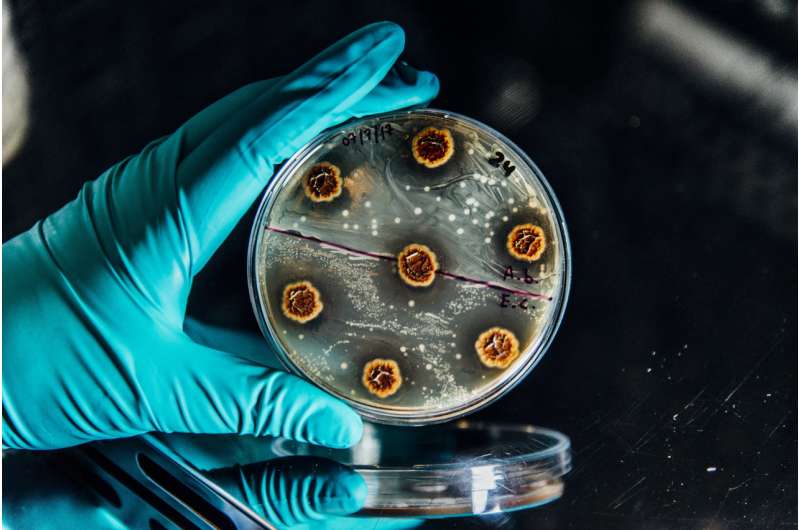Scientists make it possible to rank the risk of resistance genes

A new study published in Nature Communications will help to predict antibiotic resistance evolution and thus guide future drug development. The genes that equip bacteria with resistance to clinically used antibiotics have been found in many natural environments. Nevertheless, a functional overview of the resistance genes found in common human bacterial pathogens has been missing so far.
Research from the Novo Nordisk Foundation Center for Biosustainability at the Technical University of Denmark makes it possible to rank the risk of resistance genes and to predict the evolution of existing and future drugs.
"We are confident that the detailed phenotypic information on the large collection of individual resistance genes obtained in our study will help to expand the knowledge of antibiotic use and drug development. Such information has the potential to benefit both the pharmaceutical companies and the doctors that prescribe the antibiotics," says Andreas Porse of the Novo Nordisk Foundation Center for Biosustainability.
Bacteria are social creatures constantly sharing their genes with each other. The exchange of genes contributes to an emerging crisis of antibiotic resistance because of many harmful pathogens, including Escherichia coli, lives in communities where one transfer event can turn harmless bacteria into "superbugs."
The researchers exploited synthetic biology to sample a large mechanistic diversity of resistance genes to investigate the impact of gene transfer on a new bacterial host. By providing this diversity and resolution, it was possible to show that the biochemical mechanism of a gene product and its compatibility with host physiology is far more important than, for example, the sequence composition of a gene.
"This information is useful when developing novel antibiotics because a company might want to avoid drugs that are likely to be targeted by resistance mechanisms that may easily disseminate among pathogenic hosts. For example, the results suggest that genes causing resistance to penicillin may incorporate themselves more easily into new hosts compared to those involved in tetracycline resistance," says Andreas Porse.
The results published in Nature Communications are a good reference for the functional profiles of the resistance genes observed in pathogens, and could help industry in developing new products.
By sampling 200 genes, it becomes clear which genes products of certain mechanisms that are easiest to integrate into a cell. Everything comes down to the biochemical mechanism and host in which the genes are naturally present. A better understanding of this issue is useful for the construction of cell factories and biological circuits where genes from different organisms are often combined in a context distantly related to their original hosts.
"In biotechnology, we often wish to take genes from one organism and express them in another, sometimes distantly related organism to obtain novel functionalities in our favourite host. Our data might help engineers to predict the effects of different genes in novel cellular contexts. This will enhance a more rational construction of cell factories for the production of important bio-chemicals," says Andreas Porse.
More information: Andreas Porse et al, Biochemical mechanisms determine the functional compatibility of heterologous genes, Nature Communications (2018). DOI: 10.1038/s41467-018-02944-3
Journal information: Nature Communications
Provided by Technical University of Denmark


















